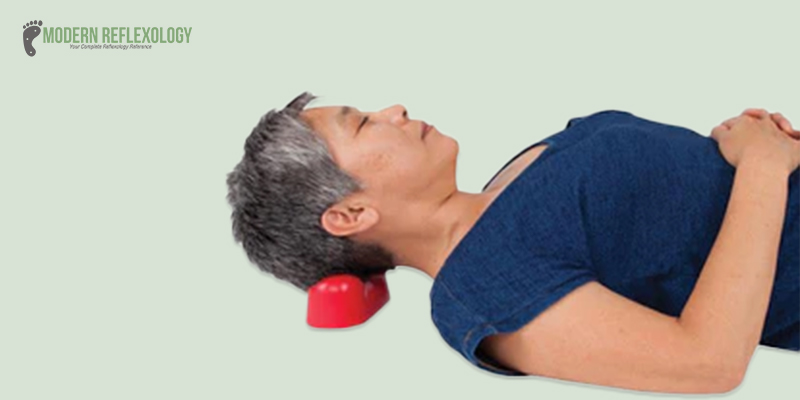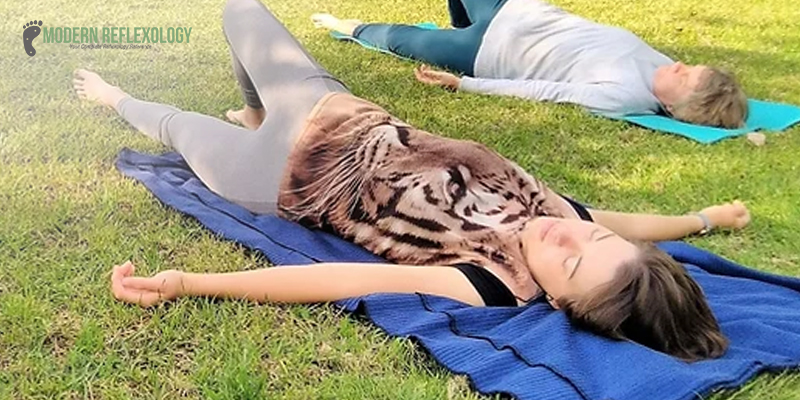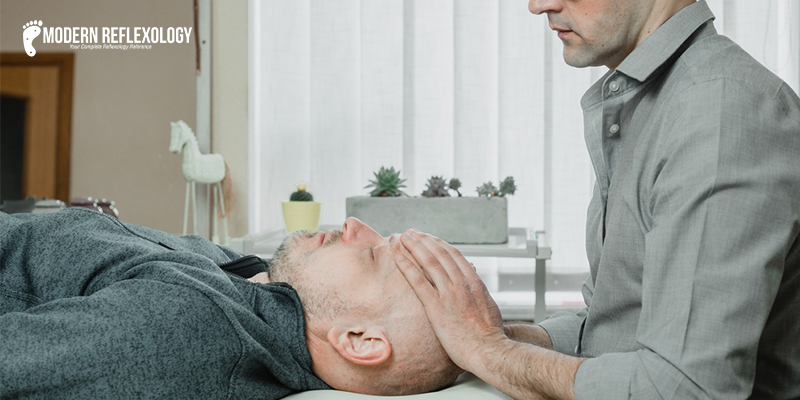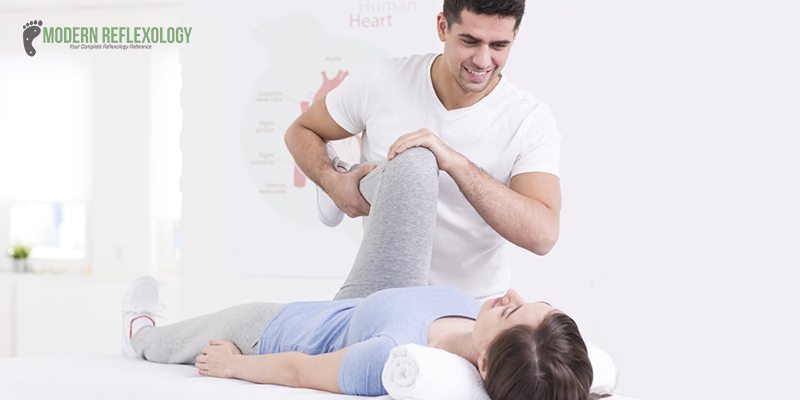Craniosacral therapy is a mild yet profound method in alternative medicine, aiming to synchronize the body’s natural cycles. Craniosacral therapy approach aims to improve overall health and alleviate a variety of diseases by addressing the complex interaction between the cranium, or skull, and the sacrum, the triangular bone at the base of the spine.
What Is Craniosacral Therapy?
Cranial sacral treatment (CST), often called craniosacral therapy, is a manual therapeutic approach that releases pressure from the sacrum, head bones, cerebrospinal fluid, and surrounding soft tissues of the central nervous system (CNS). The craniosacral fascial therapy, which consists of soft tissues, the skull, and the cerebrospinal fluid, supports the central nervous system (CNS), which is made up of the brain and spine.
CST is a non-invasive therapy that applies pressure to the head, neck, and back to reduce tension and pain brought on by compression. It is, therefore, employed to advance general health and well-being.
How Does Craniosacral Therapy Work?
The goal of Craniosacral massage therapy is to assist in the release of tension in your body’s connective tissue by gently placing your hands on specific areas. The term “fascia” refers to this. The Latin word for band is facia. Your body is made up of a casing that houses your blood vessels, brain, spinal cord, muscles, glands, organs, and nerves. Within the body, the fascia creates a network of connective tissue.
The anatomical and functional components of the human body are interdependent. This implies that there can be an impact on one body part from another. Craniosacral massage therapy aims to relieve tension (fascial clearing). This could improve the way that other related body components operate by:
- Self-regulation.
- Self-correction.
- Self-healing.
Craniosacral Therapy Procedure
Your doctor will inquire about your symptoms and any underlying medical conditions when you first come for your appointment. Be sure to arrive at your position wearing comfortable attire, as you will be fully dressed during the procedure.
You should start your hour-long session by reclining on the massage table. Your head, foot, or somewhere in the middle of your body could be where the practitioner starts. The provider will gently hold your head, feet, or twith five grams of pressure, or roughly the weight of a nickel so that you may listen to their tiny rhythms.
To restore the regular flow of the CSF fluids, they could gently press on you or move you if they think it’s necessary. They might support one of your limbs while applying tissue-release techniques. Various patients feel different feelings during treatment. These could consist of:
- Experiencing profound calm
- Slipping off to sleep, then waking up with memories or seeing colors or feeling pulsations
- Experiencing a numbing, “pins and needles” sensation
- Feeling either hot or cold
Benefits Of Craniosacral Therapy
Compression in the head, neck, and back is said to be released by CST. This can reduce discomfort and relax tension in the body and mind. It may also help relieve or release constraints related to the head, neck, and nerves and aid in restoring cranial mobility. People of various ages can benefit from craniofacial sacral therapy. It could be a component of your care for ailments such as:
- Migraines and headaches
- Constipation
- Irritable bowel syndrome (IBS)
- Disturbed sleep cycles and insomnia
- scoliosis
- sinus infections
- neck pain
- fibromyalgia
- recurrent ear infections or colic in infants
- TMJ
- trauma recovery,
- mood disorders like anxiety or depression
- difficult pregnancies
Although there is a wealth of anecdotal data supporting the effectiveness of CST, further studies are required to draw this conclusion. While some studies indicate that it might only work for babies, toddlers, and kids, there is evidence that it can help reduce stress and tension. However, other research suggests that CST is a helpful treatment for some illnesses or a valuable component of a treatment regimen.
What Is the Cerebrospinal Wave?
The nature of the cerebrospinal wave, or cranial-rhythmic impulse, is a subject of much discussion and speculation in the literature on craniosacral treatment. Some of the theories that have been put up include:
- Where the pulse comes from.
- Whether the cranial bones move (cranial sutures have mobility, according to craniosacral practitioners; classical anatomists generally assume that the cranial sutures merge in maturity).
- Whether or not there is a regular, detectable pulse (there have been several unsuccessful attempts to measure the craniosacral pulse’s cycle rate per minute).
- Whether or not the practitioner’s presence affects the pulse (this matter is central to the conflict between allopathic and integrative philosophies; from our vantage point, we believe it is naive to think that we have no control over what we see, touch or pay attention to).
Who Can Undergo Craniosacral Therapy?
Patients of all ages, including adults and children, may benefit from pediatric craniosacral therapy. Your healthcare provider may decide to postpone craniosacral therapy until you are well enough to receive treatment if you have recently encountered any of the following:
- Blood clots.
- A head injury.
- Brain enlargement.
- Cerebral aneurysm.
- Chiari malformation.
Any ailment that results in an accumulation, flow, or pressure of cerebrospinal fluid. A medical professional will inform you if you are a good candidate for CST.
Techniques Of Craniosacral Therapy
Craniosacral therapy (CST) aims to manipulate the cerebrospinal fluid and membranes surrounding and shielding the brain and spinal cord. This is done with gentle, hands-on approaches. Practitioners evaluate and correct abnormalities in this system with light pressure and touch. The following are some essential methods in Craniosacral Therapy:
1. Light Touch
To evaluate and remove constraints in the craniosacral system, practitioners utilize a very light touch, usually around the weight of a nickel. Because of this soft touch, they can detect faint rhythms and make exact modifications.
2. Palpation and Listening
Practitioners use their hands to “listen” to the cerebrospinal fluid’s rhythmic movement as it passes through the craniosacral system. They palpate various bodily parts to feel for any constrictions or irregularities in the texture and direction of the tissue.
3. Still Point Induction

This method promotes a brief cessation of the cerebrospinal fluid’s rhythmic movement. This motionless point can alleviate tension and encourage a sense of equilibrium within the system.
4. Fascial unwinding

Practitioners specializing in fascial unwinding may help the body’s fascial tension unwind or release gently. This is letting go of pre-existing tension patterns and allowing the body to move naturally.
5. Somatic Dialogue
Throughout the session, practitioners may speak with the client verbally. By gaining further insight into the client’s experiences and sensations, the practitioner can better comprehend the client’s regions of tension or imbalance.
6. Mobilization of the Cranial Bones

Certain methods can be used to mobilize and relieve constraints inside the cranial bones. This is usually done with light pressure and manipulation, and it is done with extreme sensitivity.
7. Gentle Joint Mobilization

To promote greater flexibility and less stress, practitioners may employ mild movements to mobilize joints in the pelvis, spine, and other body parts.
Final Words:
In summary, gentle craniosacral manipulation is the main component of craniosacral therapy (CST), a comprehensive technique that amplifies the body’s innate healing capacity. While the treatment is becoming increasingly well-liked, and some claim excellent results, it’s essential to approach it with knowledge.
Craniosacral therapy may help reduce stress, relax, and treat certain conditions. The methods used, which include fascial unwinding, light touch, and still point induction, are designed to correct imbalances in the craniosacral system and enhance general health.

Comments are closed